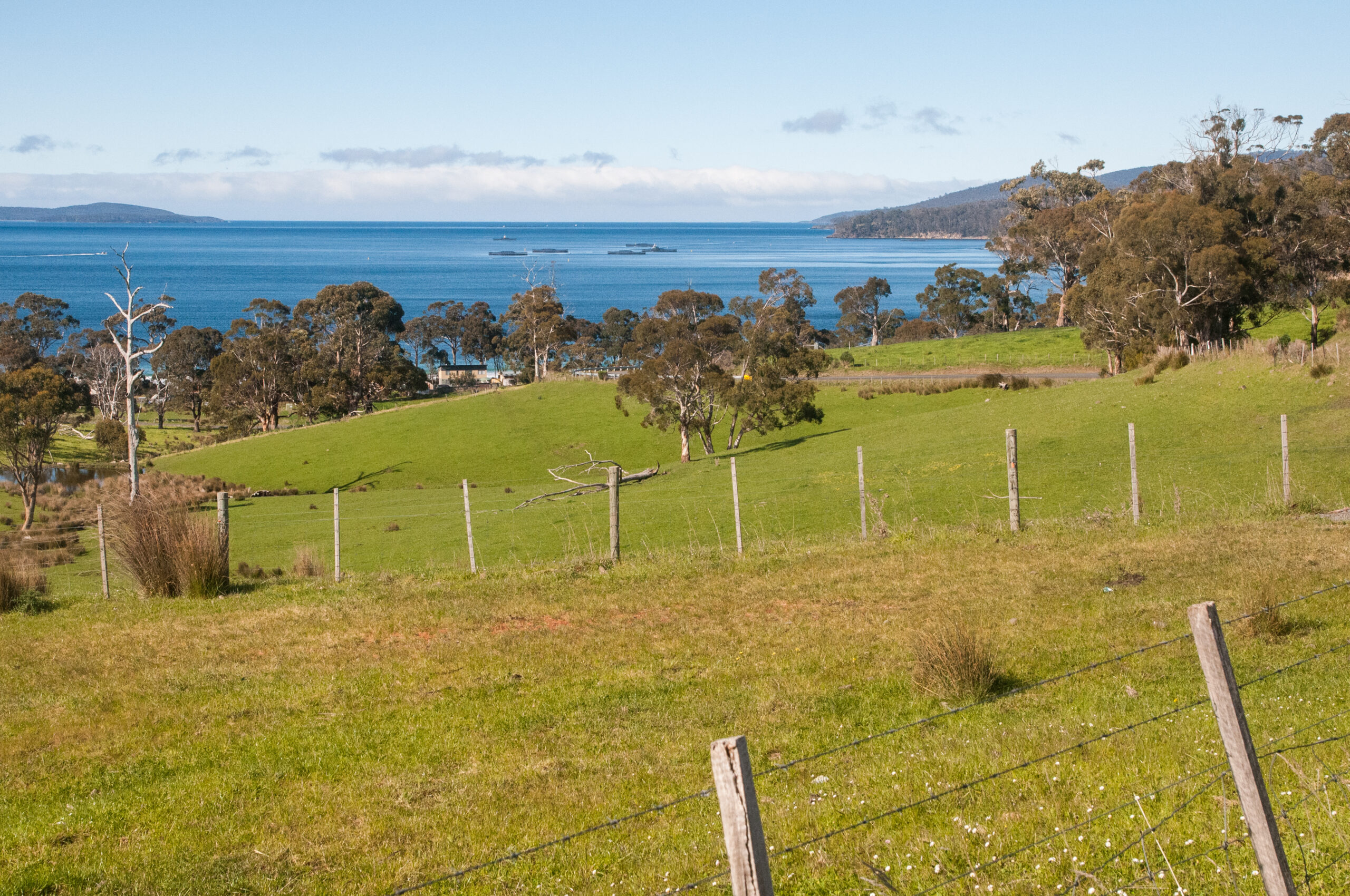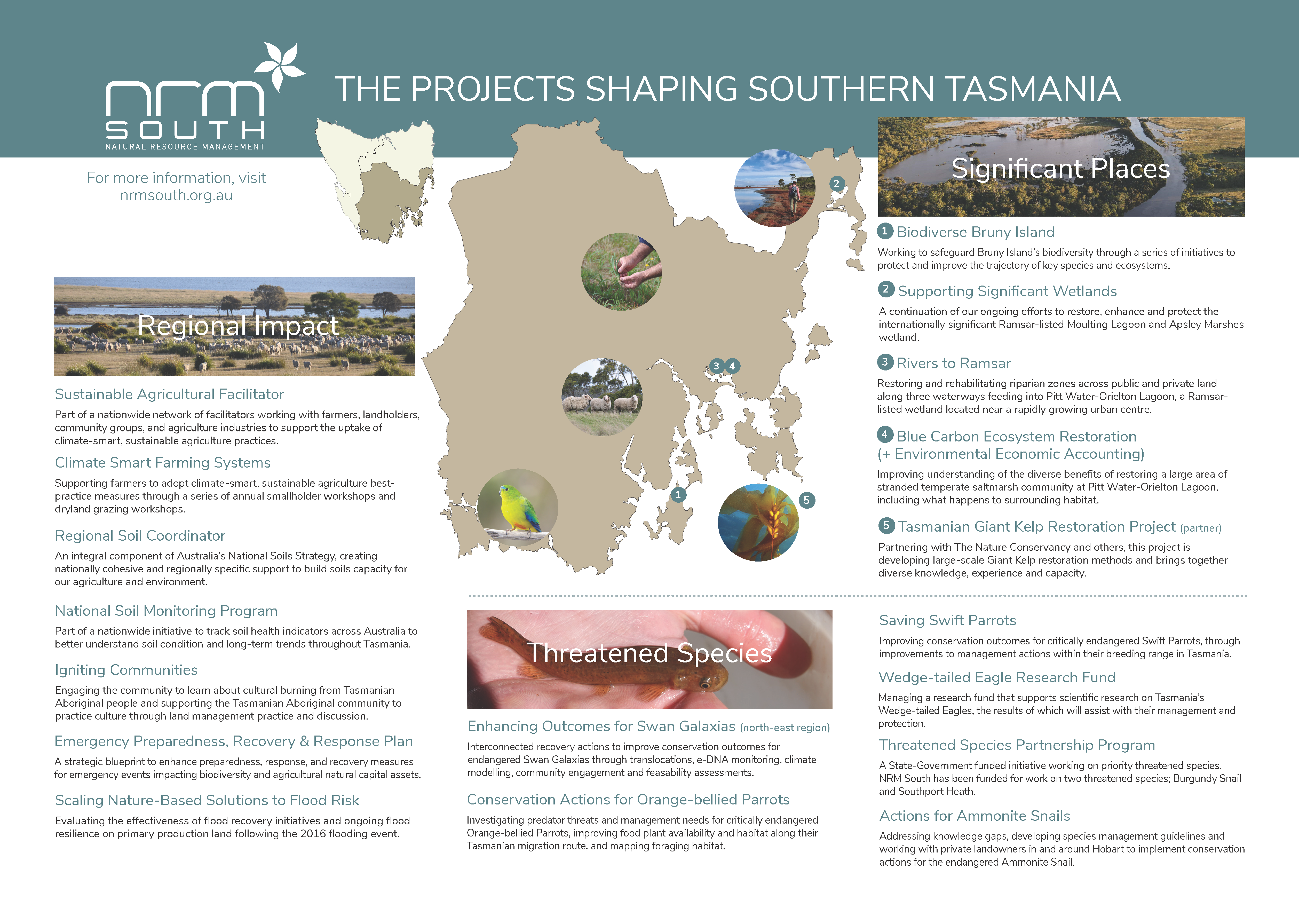-MEDIA RELEASE-
As Tasmania edges closer to another state election, much of the debate is focused on the economy. But behind the scenes, a network of natural resource management projects are doing more to protect Tasmania’s prosperity than many voters realise.
This week, NRM South is showcasing 18 active projects that are shaping the future of southern Tasmania. Projects range from soil health and resilience in the Midlands and the East Coast, to wetland and fisheries habitat restoration near Sorell, and threatened species and biosecurity actions on Bruny Island. Together, they offer a rare glimpse into the real-world impact of natural resource management (NRM), and why continued core investment is critical.
“These projects are practical, and deeply collaborative,” says Nepelle Crane, CEO of NRM South. “In addition to protecting natural values, our projects provide the foundations for food security, regional jobs, the visitor economy, and long-term economic resilience.”
NRM South is part of a statewide network of three regional organisations, alongside NRM North and Cradle Coast NRM. The NRM network has been quietly delivering solutions for land, water, biodiversity and communities for over two decades. Statewide, NRM leaders are now calling on all political parties and candidates to commit to maintaining core funding into the future.
“This isn’t about funding for the environment at the expense of the economy,” says Nepelle. “It’s about recognising that a healthy, functioning environment is the foundation of a strong economy.”
Since 2020, the NRMs have secured $65 million of direct cash investment for Tasmania, attracting roughly $10 for every $1 of core State Government funding. That investment has gone into rural and regional communities, supporting local jobs and protecting the natural assets that power industries like agriculture, fisheries, tourism, and renewable energy.
Among the 18 highlighted projects currently underway in Southern Tasmania:
- Climate-smart initiatives are helping Tasmanian farmers adapt to a changing climate and shifting markets, supporting one of the state’s biggest industries to stay productive, resilient, and profitable.
- Through the National Soil Monitoring Program, NRM South is collecting long-term data on soil health. Healthy soils are the foundation of food production, and this work supports farm planning, sustainable land use, and regional jobs.
- Wetland restoration is bringing saltmarsh areas back to life, providing nurseries for important fish species, capturing carbon, and building resilience to coastal storms. These nature-based solutions also open up new carbon and biodiversity markets, along with jobs in restoration and land management.
- Through nature-based flood management, NRM South is working with national programs to trial natural ways to reduce flood risk on farmland, helping protect agricultural land, limit damage to infrastructure, and reduce disaster recovery costs for communities and governments.
- The Biodiverse Bruny Island project works with landholders to protect the island’s unique plants and animals. By investing in healthy landscapes, these initiatives help maintain the natural environment that locals rely on and visitors come to experience.
While each project is distinct, they all reflect NRM South’s collaborative, place-based approach. The organisation works closely with landholders, researchers, Aboriginal people and groups, businesses and government to co-design solutions that make sense for each landscape and community.
The case for continued investment is strong, but NRM South notes that without stable core funding, the system that enables these projects to succeed is at risk.
“Core funding is the glue that holds it all together,” says Nepelle. “It allows us to plan for the long term, attract matching funds, retain expert staff and deliver outcomes that matter.”
NRM South has also recently launched a revamped website showcasing these projects in more detail, with interactive articles, partner stories, and a visual snapshot that is being shared with government and community stakeholders.
“This work may be quiet, but it’s shaping Tasmania’s future every single day,” says Nepelle. “The question now is whether our leaders will back that future with the commitment it deserves.”
For more information on the 18 projects shaping southern Tasmania, visit nrmsouth.org.au
-ENDS-

